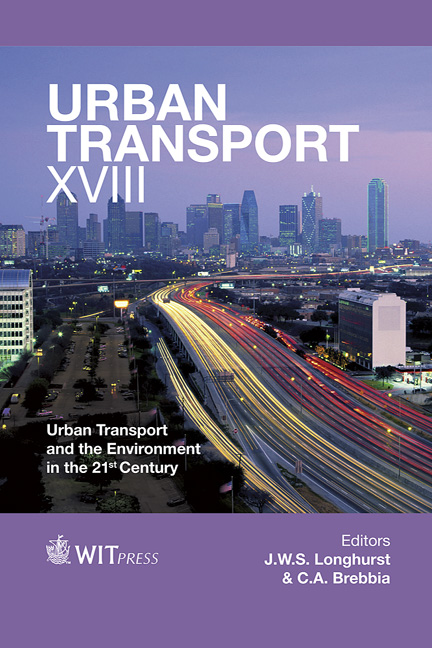Implementation And Management Of Private Traffic Limitation In Urban Areas: Experiences And Methodologies
Price
Free (open access)
Transaction
Volume
128
Pages
10
Page Range
493 - 502
Published
2012
Size
498 kb
Paper DOI
10.2495/UT120421
Copyright
WIT Press
Author(s)
M. E. Lopez Lambas & S. Ricci
Abstract
This paper shows the results of a research aimed to formulate a general model for supporting the implementation and management of an urban road pricing scheme. After a preliminary work, to define the state of the art in the field of sustainable urban mobility strategies, the problem has been theoretically set up in terms of transport economy, introducing the external costs’ concept duly translated into the principle of pricing for the use of public infrastructures. The research is based on the definition of a set of direct and indirect indicators to qualify the urban areas by land use, mobility, environmental and economic conditions. These indicators have been calculated for a selected set of typical urban areas in Europe on the basis of the results of a survey carried out by means of a specific questionnaire. Once identified the most typical and interesting applications of the road pricing concept in cities such as London (Congestion Charging), Milan (Ecopass), Stockholm (Congestion Tax) and Rome (ZTL), a large benchmarking exercise and the cross analysis of direct and indirect indicators, has allowed to define a simple general model, guidelines and key requirements for the implementation of a pricing scheme based traffic restriction in a generic urban area. The model has been finally applied to the design of a road pricing scheme for a particular area in Madrid, and to the quantification of the expected results of its implementation from a land use, mobility, environmental and economic perspective. Keywords: urban mobility management, traffic limitation, road pricing.
Keywords
urban mobility management, traffic limitation, road pricing.





